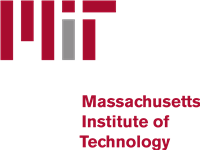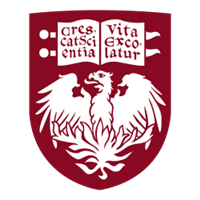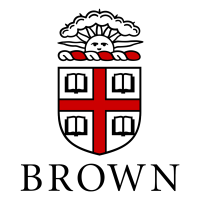What do they do?
Conduct research in fundamental mathematics or in application of mathematical techniques to science, management, and other fields. Solve problems in various fields using mathematical methods.
Also known as:
Computational Mathematician, Computational Scientist, Cryptographer, Cryptographic Vulnerability Analyst, Image Scientist, Knowledge Engineer, Mathematician, Research Computing Specialist, Research Scientist, Researcher
-
0%
Change
Ranks #18 in job growth rate0Job Openings
Ranks #20 in net job growth
-
Massachusetts Institute of Technology
Cambridge, MA
-
University of Chicago
Chicago, IL
-
Brown University
Providence, RI
-
Princeton University
Princeton, NJ
-
Washington University in St Louis
Saint Louis, MO
Looking for colleges that offer a specific major? Use the College Match Tool to find your best-matched schools and discover your estimated Net Price!
- Doctorate or Professional Degree (12%)
- Master's degree (36%)
- Bachelor's degree (39%)
- Associate's degree (3%)
- Some college, no degree (6%)
- High school diploma equivalent (3%)
- Less than high school diploma (<1%)
Most Popular Majors that prepare Mathematicians
-
#1
-
Degrees Granted
25,002
-
Female Students
9,693
-
Male Students
15,309
-
Median Starting Salary
$54,000
-
-
#2
-
Degrees Granted
4,667
-
Female Students
1,733
-
Male Students
2,934
-
Median Starting Salary
$56,100
-
-
#3
-
Degrees Granted
4,050
-
Female Students
1,502
-
Male Students
2,548
-
Median Starting Salary
$56,100
-
-
#4
-
Degrees Granted
1,195
-
Female Students
356
-
Male Students
839
-
Median Starting Salary
$63,500
-
-
#5
-
Degrees Granted
912
-
Female Students
393
-
Male Students
519
-
Median Starting Salary
$56,100
-
People in this career often have these skills:
- Mathematics - Using mathematics to solve problems.
- Critical Thinking - Using logic and reasoning to identify the strengths and weaknesses of alternative solutions, conclusions, or approaches to problems.
- Complex Problem Solving - Identifying complex problems and reviewing related information to develop and evaluate options and implement solutions.
- Reading Comprehension - Understanding written sentences and paragraphs in work-related documents.
- Active Learning - Understanding the implications of new information for both current and future problem-solving and decision-making.
- Science - Using scientific rules and methods to solve problems.
- Writing - Communicating effectively in writing as appropriate for the needs of the audience.
- Judgment and Decision Making - Considering the relative costs and benefits of potential actions to choose the most appropriate one.
- Active Listening - Giving full attention to what other people are saying, taking time to understand the points being made, asking questions as appropriate, and not interrupting at inappropriate times.
- Speaking - Talking to others to convey information effectively.
- Learning Strategies - Selecting and using training/instructional methods and procedures appropriate for the situation when learning or teaching new things.
People in this career often know a lot about:
- Mathematics - Knowledge of arithmetic, algebra, geometry, calculus, statistics, and their applications.
- English Language - Knowledge of the structure and content of the English language including the meaning and spelling of words, rules of composition, and grammar.
- Computers and Electronics - Knowledge of circuit boards, processors, chips, electronic equipment, and computer hardware and software, including applications and programming.
People in this career often have talent in:
- Mathematical Reasoning - The ability to choose the right mathematical methods or formulas to solve a problem.
- Number Facility - The ability to add, subtract, multiply, or divide quickly and correctly.
- Deductive Reasoning - The ability to apply general rules to specific problems to produce answers that make sense.
- Inductive Reasoning - The ability to combine pieces of information to form general rules or conclusions (includes finding a relationship among seemingly unrelated events).
- Oral Comprehension - The ability to listen to and understand information and ideas presented through spoken words and sentences.
- Written Comprehension - The ability to read and understand information and ideas presented in writing.
- Information Ordering - The ability to arrange things or actions in a certain order or pattern according to a specific rule or set of rules (e.g., patterns of numbers, letters, words, pictures, mathematical operations).
- Oral Expression - The ability to communicate information and ideas in speaking so others will understand.
- Written Expression - The ability to communicate information and ideas in writing so others will understand.
- Fluency of Ideas - The ability to come up with a number of ideas about a topic (the number of ideas is important, not their quality, correctness, or creativity).
- Problem Sensitivity - The ability to tell when something is wrong or is likely to go wrong. It does not involve solving the problem, only recognizing that there is a problem.
- Category Flexibility - The ability to generate or use different sets of rules for combining or grouping things in different ways.
- Near Vision - The ability to see details at close range (within a few feet of the observer).
- Originality - The ability to come up with unusual or clever ideas about a given topic or situation, or to develop creative ways to solve a problem.
People in this career often do these activities:
- Analyze data to identify trends or relationships among variables.
- Present research results to others.
- Prepare analytical reports.
- Update knowledge about emerging industry or technology trends.
- Apply mathematical principles or statistical approaches to solve problems in scientific or applied fields.
- Design computer modeling or simulation programs.
- Develop scientific or mathematical models.
- Determine appropriate methods for data analysis.
- Analyze security of systems, network, or data.
- Develop computer or information security policies or procedures.
This page includes data from:

 Occupation statistics: USDOL U.S. Bureau of Labor Statistics Occupational Employment Statistics
Occupation statistics: USDOL U.S. Bureau of Labor Statistics Occupational Employment Statistics









